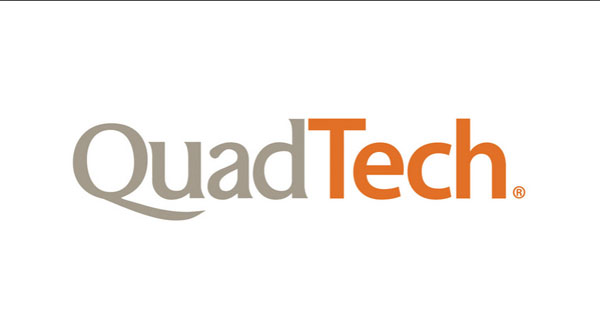According to the new market research report the Functional Printing Market growing at a CAGR of 22.08% from 2013 to 2020 and is said to be worth $13.79 Billion by 2020
The demand for a new variety of low cost electronic products, made possible by a range of printing techniques and materials, has pushed the demand for ‘functional printing’, across geographies.
Conventional printing techniques like inkjet, screen, flexography, gravure, and soon have been modified so as to be capable of printing on a range of substrates using functional inks. Currently, the screen printing technique dominates the functional printing market due to it high reliability, and it is mainly used in the production of RFID antennas and sensors. The functional printing market is growing as a result of the enormous opportunities; and is being employed to produce RFID chips, OLED displays, sensors, and so on.
There are a lot of materials being developed as substrates and inks for printed products; and these materials are the key to produce robust and reliable electronics.The developments of new inks; graphene for instance, and substrates, is further facilitating the companies to adopt printed electronics using functional printing. Also, the increasing demand for RFID tags, displays, and biosensors is, further, driving the market for functional printing. The existing printing technologies are not specially designed for functional printing purposes but, now, firms are coming up with printing technologies designed especially for printing electronics.
The functional printing market is segmented into five categories that include materials, technology, coating, application, and geography. This report divides the overall market into four major geographical segments, namely North America, Europe, APAC, and ROW. North America contributes more when compared to the other segments. The manufacturers of the functional printing equipment and suppliers of materials are mainly from North America; as for the APAC region, most of the demand comes, especially, from China.
The demand for a new variety of low cost electronic products, made possible by a range of printing techniques and materials, has pushed the demand for ‘functional printing’, across geographies.
Conventional printing techniques like inkjet, screen, flexography, gravure, and soon have been modified so as to be capable of printing on a range of substrates using functional inks. Currently, the screen printing technique dominates the functional printing market due to it high reliability, and it is mainly used in the production of RFID antennas and sensors. The functional printing market is growing as a result of the enormous opportunities; and is being employed to produce RFID chips, OLED displays, sensors, and so on.
There are a lot of materials being developed as substrates and inks for printed products; and these materials are the key to produce robust and reliable electronics.The developments of new inks; graphene for instance, and substrates, is further facilitating the companies to adopt printed electronics using functional printing. Also, the increasing demand for RFID tags, displays, and biosensors is, further, driving the market for functional printing. The existing printing technologies are not specially designed for functional printing purposes but, now, firms are coming up with printing technologies designed especially for printing electronics.
The functional printing market is segmented into five categories that include materials, technology, coating, application, and geography. This report divides the overall market into four major geographical segments, namely North America, Europe, APAC, and ROW. North America contributes more when compared to the other segments. The manufacturers of the functional printing equipment and suppliers of materials are mainly from North America; as for the APAC region, most of the demand comes, especially, from China.
Functional printing is a process of bringing functionality into 2D and 3D silicon based components. It is printing of different electronic components using substrates and ink. The some of the most commonly used printing techniques are screen, flexography and inkjet which are being employed to print on various substrates like glass, paper, paper etc. using dielectric inks, conductive copper and silver inks and grapheme inks. The increasing demand for low cost volume production of electronic components and rising concern towards environmental sustainability issues has boosted the growth of Global Functional printing market.
Functional Printing is used for mass production of electronic devices such as light crystal display (LCD), Radio-frequency identification (RFID) chips, sensors, photovoltaic and organic light emitting diode (OLED).The use of functional printing for production of electronics is not only cost effective and environmentally safe but also provide scope for creating graphical visual effects like electrochromic effect, electroluminescent effect and electroluminescent effects. Functional printing offers increased durability, efficiency and reliability to the electronic components as compared to conventional process of production. On other hand existing functional printing technologies are still immature in terms of its application in development and production of electronic objects. It act as a both opportunity as well as challenge for market players to develop functional printing specifically designed for printed electronics.
On the basis of materials, Global Functional Printing market is segmented into – substrate and ink. Further substrate is categorized into– glass, polyethylene naphthalene (PEN), plastic, gallium nitride (GAN), paper, polyethylene terephthalate (PET), silicon carbide and ink is categorized into- dielectric inks, conductive copper, silver inks and grapheme inks; On the basis of technology, Global Functional Printing market is segmented into – screen printing, flexography printing, gravure printing, micro-contact printing, offset printing and inkjet printing; On the basis of coating, Global Functional Printing market is categorized into – Conformal coating and conductive coating; On the basis of Application, Global Functional Printing market is categorized into – light crystal display (LCD), Radio-frequency identification (RFID) chips, sensors, photovoltaic, organic light emitting diode (OLED), lighting, batteries and displays.
The North America is the biggest functional printing market as most of the functional printing equipment & material manufacturers are from this region. There is need for technical developments and interdisciplinary efforts to fuel more innovative business opportunities along with core functional printing business to support rapid growth in functional printing market.
The basic factors that drive the growth of global functional printing market is increasing demand of low cost, reliable and robust electronic devices such as RFID antennas and sensors all over the world. The development of new types of substrate materials and inks has further boosted the global functional printing market. The functional printing market is also driven by benefits that it offers such as less material wastage and low power consumption, which ultimately an effort to reduce negative environment impact by electronics industry. On other side, functional printing is not specifically designed for production of electronic components, which is a factor that surpasses the growth of functional printing market.
Some of the top players in global Functional Printing market include – Avery Dennison Corporation (U.S.), Blue Spark Technologies (U.S.), Blue Spark Technologies (U.S.), BASF SE (Germany), Mark Andy, Inc. (U.S.), Xennia Technology (U.K.), Novaled AG (Germany), Xaar PLC (U.K.), Palo Alto Research Center Incorporated (PARC) (U.S.) and E Ink Holdings, Inc (Taiwan).
Future Market Insights is the premier provider of market intelligence and consulting services, serving clients in over 150 countries. FMI is headquartered in London, the global financial capital, and has delivery centres in the U.S. and India.
FMI’s research and consulting services help businesses around the globe navigate the challenges in a rapidly evolving marketplace with confidence and clarity. Our customised and syndicated market research reports deliver actionable insights that drive sustainable growth. We continuously track emerging trends and events in a broad range of end industries to ensure our clients prepare for the evolving needs of their consumers.
FMI’s team of over 200 research analysts provides market intelligence at global, regional, and country level. Our analysts are committed to provide independent insights, relying on our cognitive defusion training module, which conditions them to look at data objectively and unbiasedly.
Request For Report Sample: www.futuremarketinsights.com










